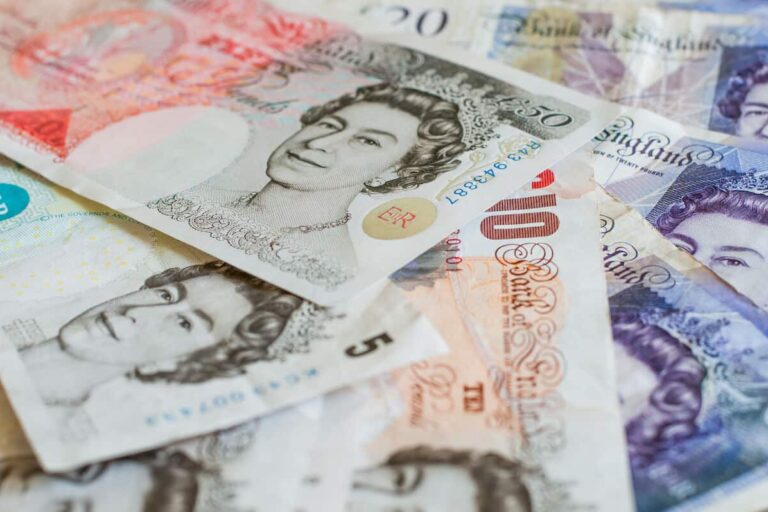Whether you’re counting out change at the local shop or transferring money abroad, the British pound is a daily fixture of life in the UK. As the world’s oldest currency still in use, it carries a fascinating history and remains one of the most traded currencies globally.
If you’re curious about how the pound evolved or simply want some tips on exchanging it, this guide has you covered.
What is the UK’s currency?
The UK’s official currency is the British pound (GBP), also known as the pound sterling, represented by the £ symbol. It’s the legal tender for England, Scotland, Wales, and Northern Ireland, as well as some overseas territories such as Gibraltar and the Falkland Islands.
The Bank of England issues pound notes in denominations of £5, £10, £20, and £50, alongside coins ranging from 1p to £2. One pound is divided into 100 pence (or “pee,” as it’s commonly said).
British pound exchange rates
Exchange rates fluctuate daily, so if you’re heading abroad or transferring money overseas, check a reliable source like your bank or a money transfer app for the latest rates.
The history of the British pound
The British pound has been around for over 1,200 years. It has its roots in Anglo-Saxon England, where it was equivalent to a pound of silver coins. Under King Athelstan in 928, the pound officially became England’s currency, and by the medieval period, it was a cornerstone of trade and wealth.
In 1694, the Bank of England was established to manage the currency, and over time, the pound shifted from silver to the gold standard. By the 20th century, the pound had moved away from being tied to precious metals, with its value now determined by market forces.
Today, the pound is not only a symbol of Britain’s heritage but also a modern and resilient currency, ranking as the fourth most traded worldwide.
7 Surprising Facts About the Pound
- It’s Roman in origin.
The word pound comes from the Latin libra, meaning weight or balance. Originally, a pound was worth exactly a pound of silver. - It’s one of the world’s oldest currencies.
The first pound notes, handwritten at the time, appeared in 1694. - Coins change with each monarch.
With every new monarch, the portrait on UK coins faces the opposite direction. Queen Elizabeth II faced right; King Charles III faces left. - Pence are cleverly designed.
Two 1p coins weigh the same as a single 2p coin, a detail rooted in the pound’s history as a weight-based currency. - Polymer notes are more durable.
Modern notes are made of polymer, which lasts longer than paper and is harder to counterfeit. - It’s frequently counterfeited.
An estimated 2.5% of £1 coins in circulation are fake — though the newer £1 coin design has made counterfeiting harder. - The pound resisted the euro.
Even while the UK was in the EU, it retained the pound instead of adopting the euro, emphasising its commitment to national identity.
How to Exchange British Pounds
For visitors to the UK, pounds can be exchanged at airports, ATMs, or local banks. If you’re sending money abroad, trusted services like Remitly make the process quick and straightforward.
